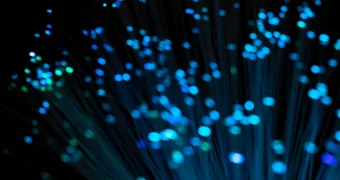
Speed
Fiber optics can provide significantly higher internet speeds than other technologies, such as coaxial cable or DSL. It allows data transmission at speeds exceeding 1 Gbps.

Stability
Unlike other transmission methods, fiber optics are less susceptible to electromagnetic interference, ensuring a more stable connection with less fluctuation.

Bandwidth
Fiber optics have a much greater bandwidth capacity than copper cables, enabling the simultaneous sending and receiving of large volumes of data without compromising quality.

Lower Latency
Fiber optics offer lower latency compared to other technologies, which improves the experience for activities that require quick responses, such as video calls and online gaming.

Transmission Distance
Fiber optic cables can transmit data over much longer distances without loss of signal quality, unlike mediums such as copper cables, which lose strength as distance increases.

Durability and Security
Fiber optics are more resistant to extreme environmental conditions and less susceptible to physical damage. Additionally, fiber is more secure against interceptions and intrusions, as it does not emit electromagnetic signals, making eavesdropping more difficult.
